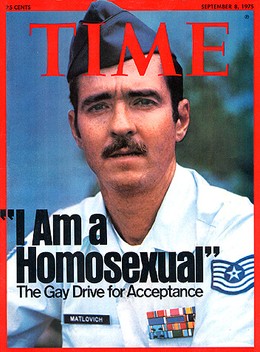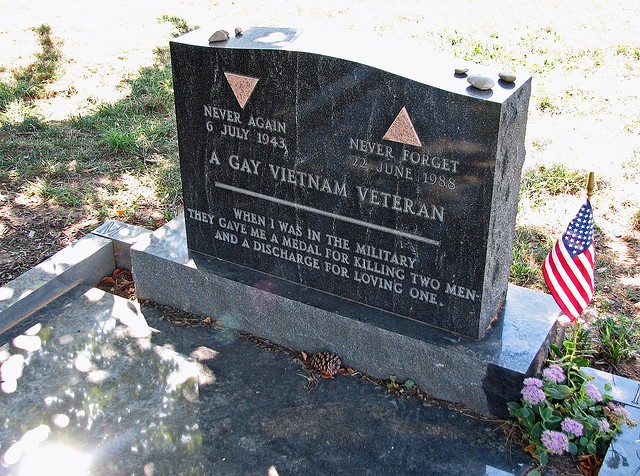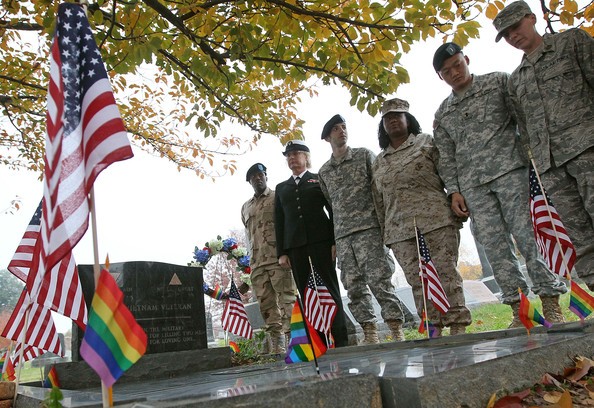Leonard Matlovich's Gravesite
Introduction
Text-to-speech Audio
Images
"I Am a Homosexual" TIME Magazine

Gay Vietnam Veteran Memorial

participate in a vigil at the gravesite of Sgt. Leonard Matlovich ... More

Backstory and Context
Text-to-speech Audio
Leonard P. Matlovich, a Vietnam War veteran and recipient of the Purple Heart and Bronze Star, was born on July 6th 1943 and died on June 22nd 1988. He served in the United States Air Force from 1963-1975. Although his service to America was grand, it was not his greatest service to our country. Unveiling the mistreatment of gays in the military, he bravely disclosed his sexual orientation and fought a battle for gay equality in the U.S. military.
Disclosure of his sexuality brought attention to gays in the military and the desire to have equal treatment. His journey as a Gay activist brought change to the LGBT community and awareness to America with the publicity he gained by appearing on the cover of TIME magazine, the September 8, 1975 issue. Having worked successfully in "race relations" in the military, he connected the similarities between the discrimination of minorities and gays. Experiences in his military career stimulated his spirit of activism for gay rights.
The U.S. Military found Matlovich unfit for service after his sexuality orientation disclosure. Though this door in his life was unfairly closed, a door of activism for the LGBT community was opened. While in Europe after a visit to the grave of Oscar Wilde, his burden to memorialize those who were gay and had served their country led him to pursue a gay memorial in the United States. This desire was a foreshadowing of the design for his own gravesite.
Leonard Matlovich continued his Gay Rights activism and his fight for AIDS treatments and education even after his own diagnosis of AIDS. Just as he was open with the U.S. Military regarding his sexuality, he was just as open with his AIDS diagnosis. Matlovich, as and activist and a self-less man, fought a battle against gay prejudice by willingly sacrificing his career, his religion, and gaining the stigmatic reproach that came with being gay, as well as with the AIDS virus.
Planning for his death, he designed his own grave marker. Buried at the Congressional Cemetery in D.C., his grave marker reads "A Gay Vietnam Veteran, When I was in the military, they gave me a medal for killing two men and a discharge for loving one." (Inscription on Matlovich's tombstone) His design included that the stone be made similar to the Vietnam War Memorial and reflecting the sacrifice made by the men who not only lost their lives serving their country, but the gay men who lost their lives serving their country. Also, he recognizes the persecution of gays within the Nazi regime by the inscription of 2 pink triangles on the stone. A photo of this stone is available on Clio.
Leonard Matlovich could have kept his sexuality a secret. He could have cooperated with the military and renounced his gay life. But he sacrificed his career and his life, as he knew it before his "coming out," in order to pursue a career as an activist and be a voice for the LGBT community. Although his life was cut short by AIDS, as he planned his death arrangements, he speaks loudly from the grave with his words engraved on a monument memorializing those who made the ultimate sacrifice and were gay. 3.
